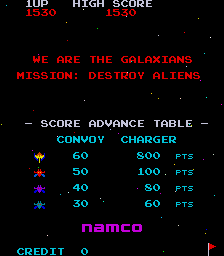Galaxian (bootleg, set 3)
Game Information
| manufacturer | bootleg |
| year | 1979 |
| clone of | galaxian |
| other clones | astrians galaktron galap1 galap2 galap4 galapx galartic galaxbsf galaxbsf2 galaxcirsa galaxiamv galaxiana galaxianbl galaxianbl2 galaxianbl3 galaxianem galaxiani galaxianiii galaxianm galaxianmo galaxianrp galaxiant galaxrcgg galaxrf galaxrfgg galaxyx galkamika galturbo kamakazi3 kamikazp mcwars moonaln sgalwars spacian2 starfght superg supergs supergx swarm tst_galx zerotime zerotimea zerotimeb zerotimed zerotimemc fntspcian galaktrons3 |
| genre | Shoot-'Em-Up |
| downloads | 62 |
Screenshots










Download Details
| split set | galaxbsf2.zip 8.84k |
| parent set | galaxian.zip 10.08k ↗ |
| standalone set | galaxbsf2.7z 8.53k |
Driver Details
| source | galaxian/galaxian.cpp |
| status | good |
| emulation | good |
| savestate | supported |
Series Details
Screen Details
| display | screen |
| type | raster |
| orientation | horizontal |
| width | 768px |
| height | 224px |
| refresh | 60.61mhz |
Input Details
| player | 1 |
| type | joy |
| buttons | 1 |
| directions | 2 |
| player | 2 |
| type | joy |
| buttons | 1 |
| directions | 2 |
Chipset Details
| name | Zilog Z80 |
| clock | 2.93mhz |
| name | Speaker |
| clock | N/A |
| name | Discrete Sound |
| clock | N/A |
ROM Details
| name | size | crc |
|---|---|---|
| gal00eg.ic41 | 1.00k | 7c44510c |
| gal01eg.ic5 | 1.00k | 2a426500 |
| gal02.ic6 | 1.00k | 30e28016 |
| gal03.ic7 | 1.00k | de7e7770 |
| gal04.ic8 | 1.00k | a916c919 |
| gal05.ic9 | 1.00k | 9175882b |
| gal06.ic10 | 1.00k | 1237b9da |
| gal07eg.ic11 | 1.00k | 16144658 |
| gal08.ic12 | 1.00k | 901894cc |
| gal09.ic13 | 1.00k | 5876f695 |
| gal00eg.ic4 | 1.00k | 1038467f |
| galaxian.1h | 2.00k | 39fb43a4 |
| galaxian.1k | 2.00k | 7e3f56a2 |
| 6l.bpr | 32.00b | c3ac9467 |